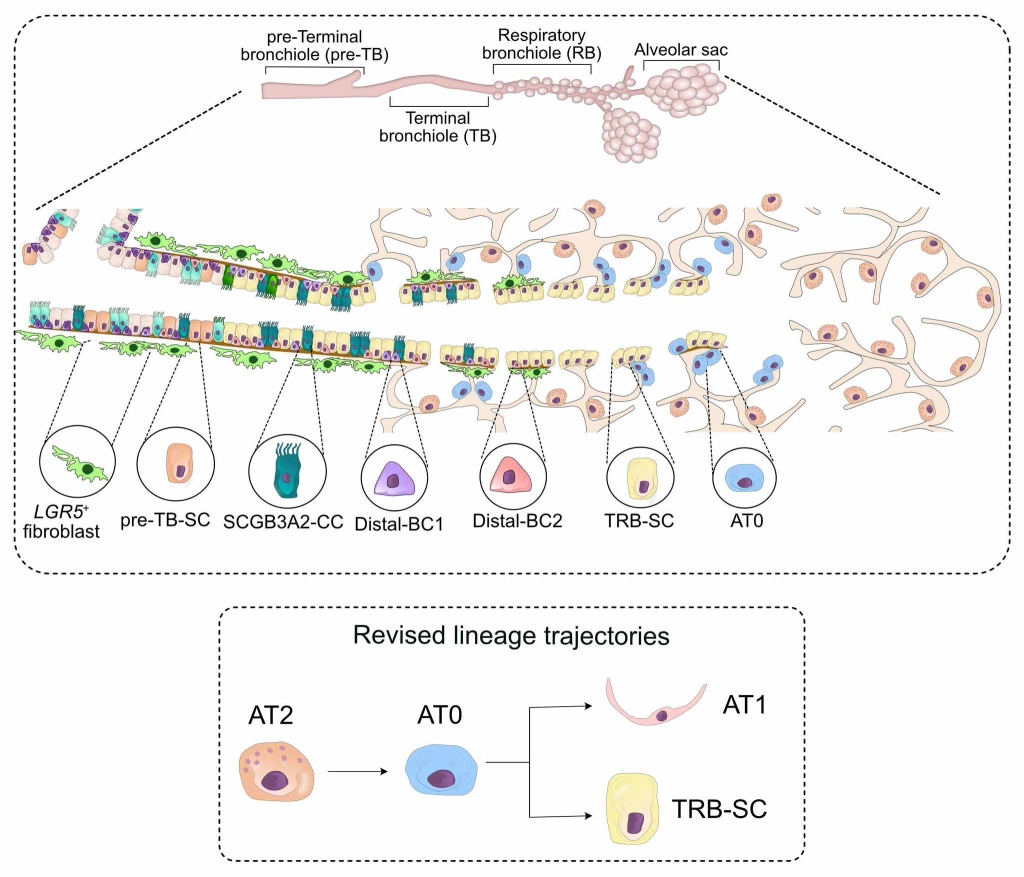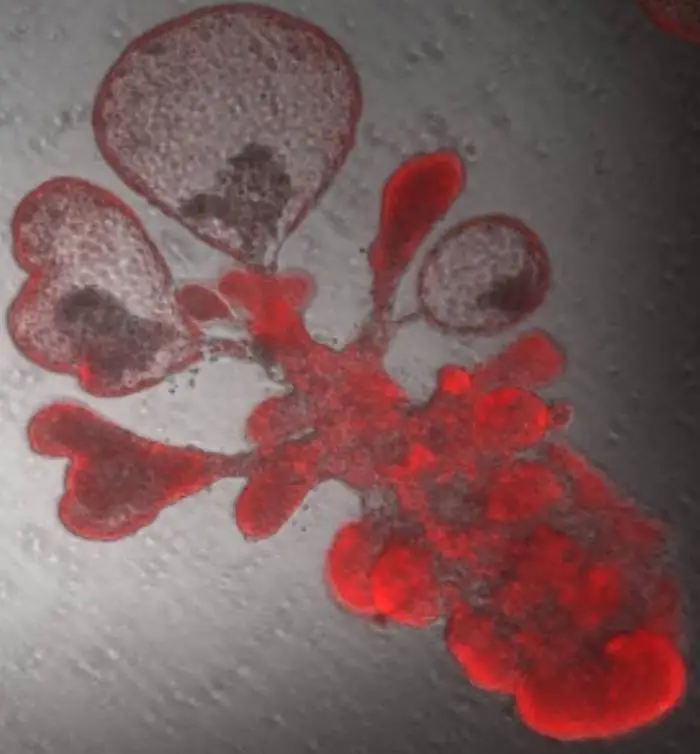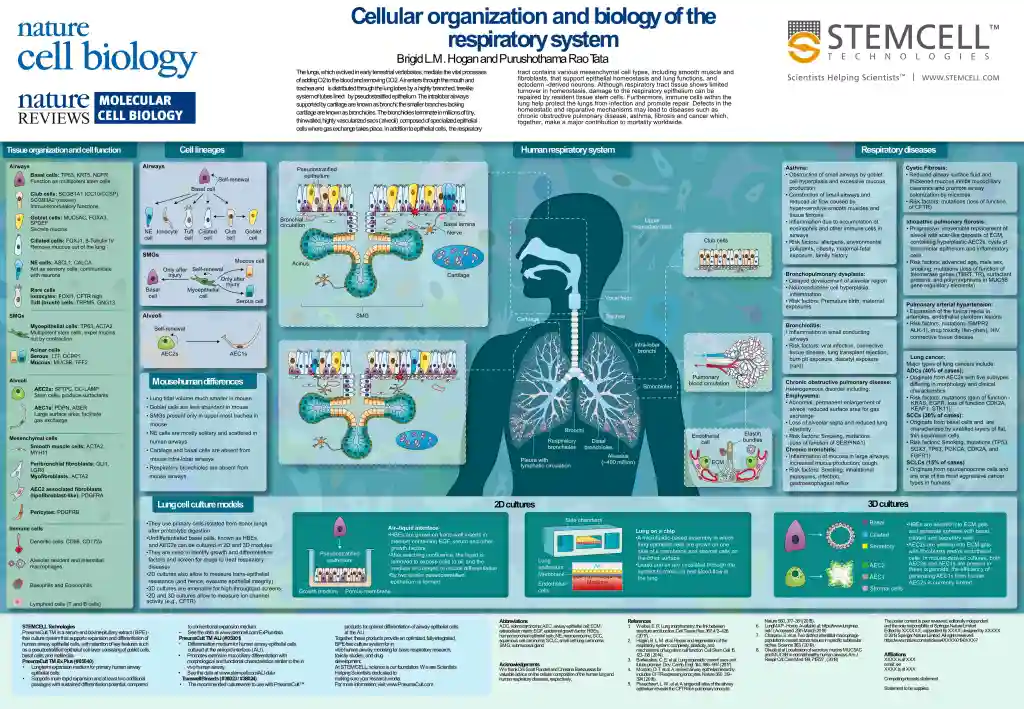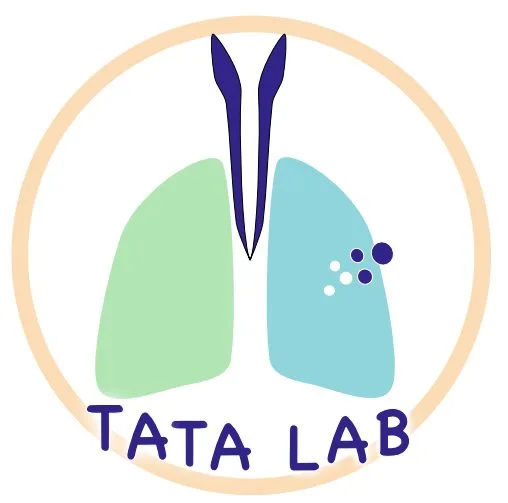
Understanding the genetic and epigenetic basis of cell identity and plasticity in regeneration and tumorigenesis
Congratulations!
Congratulations to Dr. Tata for winning one of only two 2022 ISRB Rising Star Awards. This award is given to early career researchers charting new directions and making novel scientific contributions in regenerative biology research. You can learn more about the award on the ISRB website here: https://internationalsocietyforregenerativebiology.org/Rising-Star-Award
Congratulations to our Postdoc Satoshi Konishi for winning the “Best Image” award at Duke’s 2022 Cell Biology departmental retreat!
New paper in Nature
Check out our work just published in Nature describing newly identified cells/cell states in human lungs and revised lineage hierarchies. Some of the cell types/states identified here are not found in mice and this work re-defines lineage hierarchies in human lung tissues during regeneration. These findings have significant implications to lung diseases including pulmonary fibrosis and COPD!

Lab-made mini-lungs mimic COVID infections

The Tata lab in the Department of Cell Biology has developed a “lung organoid” model, also dubbed ‘mini-lungs in a dish’. The organoids are grown from alveolar epithelial type-2 cells (AT2s), which are the stem cells that repair the deepest portions of the lungs where SARS-CoV-2 attacks. This is a versatile model system that allows us to study not only SARS-CoV-2, but any respiratory virus that targets these cells, including influenza. The Tata lab found the cells produced interferons and experienced self-destructive cell death, just as samples from Covid patients have shown. The signal for cell suicide was sometimes triggered in uninfected neighboring lung cells as well, as the cells struggled to get ahead of the virus. The researchers also compared the gene activity patterns between the mini-lungs and samples from six severe Covid-19 patients and found striking similarities. A paper describing the development of the mini-lungs and some early experiments with coronavirus infection published in the journal Cell Stem Cell.
Pictured above: A single lung stem cell copied itself to generate thousands of cells and generate a bubble-like structure that resembles breathing tissues of the human lung. These are the cells that the SARS-CoV-2 virus targets. Image credit: Arvind Konkimalla/Tata lab
Check out our contributions to the latest COVID-19 research!
We investigated SARS-CoV-2 potential tropism by surveying expression of viral entry-associated genes in single-cell RNA-sequencing data from multiple tissues from healthy human donors…Read more
Here, we leverage human and non-human primate (NHP) single-cell RNA-sequencing (scRNA-seq) datasets to uncover the cell subsets that may serve as cellular targets of SARS-CoV-2…Read more
New paper in Cell
We utilized a reverse genetics system to generate a GFP reporter virus to explore SARS-CoV-2 pathogenesis and a luciferase reporter virus to demonstrate sera collected from SARS and COVID-19 patients…Read more

Featured Publication
Brigid Hogan and Purushothama Rao Tata illustrate the cellular architecture of the respiratory system and highlight key cell types residing in different regions, including their markers, functions, lineage relationships and pathological relevance, as well as approaches to culturing and studying them in vitro.
Duke University School of Medicine
307 Research Drive Nanaline Duke Building Room 353 Durham, NC 27710

Follow us on Twitter




